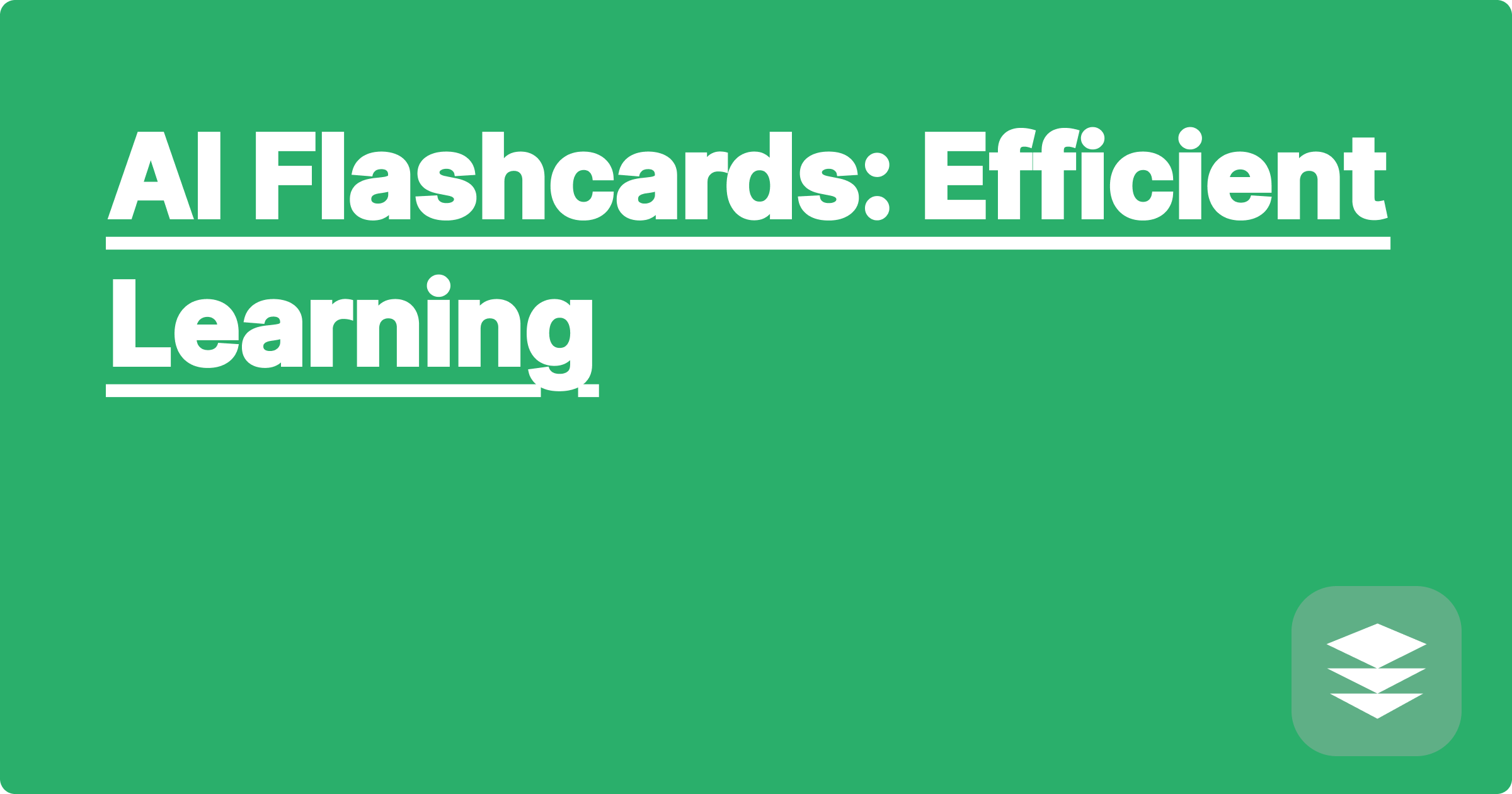
The demanding world of STEM education and research often leaves students feeling overwhelmed. Juggling complex concepts, extensive research, and tight deadlines can be a constant struggle. However, a new wave of AI-powered tools offers a lifeline, promising to revolutionize how we learn and conduct research. These tools aren't just about generating text or images; they can be powerful allies in understanding complex topics, managing time effectively, and achieving academic success. This blog post explores how AI, specifically AI flashcards and other less-known tools, can empower STEM students and researchers to conquer these challenges and reach their full potential. We'll dive into practical examples, share real-world experiences, and reveal how these tools can transform your academic journey.
For many STEM students, the traditional learning methods, like rote memorization and endless note-taking, often fall short. They can be time-consuming and inefficient, failing to foster true understanding. This is where AI steps in, offering personalized learning experiences and intelligent research assistance. Imagine having a virtual AI partner, a GPAI, that helps you plan your studies, analyze data, and even conduct literature reviews. This isn't science fiction; it's the reality of AI-powered learning, and it's within your reach.
STEM fields are characterized by their complexity and the sheer volume of information students need to absorb. From intricate mathematical equations to complex biological processes, understanding these concepts requires more than just memorization. It demands critical thinking, problem-solving skills, and the ability to connect different ideas. Traditional learning methods often struggle to meet these demands. Furthermore, research in STEM fields is equally demanding. Researchers spend countless hours sifting through literature, analyzing data, and designing experiments. The pressure to publish, secure funding, and stay ahead of the curve can be immense. This is where the strategic use of AI tools can make a significant difference.
AI tools like ChatGPT, Claude, and Wolfram Alpha can be powerful allies in tackling these challenges. ChatGPT and Claude can help you understand complex topics by breaking them down into simpler explanations, providing different perspectives, and even generating practice questions. Wolfram Alpha excels at solving mathematical and scientific problems, offering step-by-step solutions and visualizations. However, beyond these well-known tools, a world of specialized AI applications awaits. Tools like Elicit can assist with literature reviews, summarizing key findings and identifying relevant research papers. For data analysis, tools like Deepnote offer collaborative coding environments and powerful machine learning capabilities. Even more specialized tools exist for specific STEM disciplines, like protein folding prediction software in biology or circuit design tools in electrical engineering.
Let's consider the example of creating AI-powered flashcards. First, identify the key concepts you need to learn. Then, use an AI tool like ChatGPT or a specialized flashcard platform to generate flashcards. These platforms can often incorporate images, diagrams, and even audio explanations, making learning more engaging. Next, use these flashcards for spaced repetition learning, a technique that optimizes memory retention. GPAI, your virtual AI partner, can help you schedule your study sessions and track your progress. GPAI can also be used to analyze your learning patterns and identify areas where you need more focus. Imagine asking your GPAI, "What are my weakest areas in organic chemistry?" and receiving a personalized report highlighting specific concepts and suggesting relevant resources.
Consider a biology student struggling with genetics. They could use an AI tool to generate flashcards on different genetic concepts, including Mendelian inheritance, DNA replication, and gene expression. The AI could even create interactive diagrams illustrating these processes. Another example is a physics student working on a complex problem involving projectile motion. They could use Wolfram Alpha to solve the equations, visualize the trajectory, and even explore different scenarios by changing the initial conditions. In research, a graduate student could use Elicit to quickly review hundreds of research papers on a specific topic, saving weeks of manual effort. By integrating these tools into their workflow, students and researchers can significantly enhance their understanding and productivity.
To maximize the benefits of AI tools, it's crucial to develop effective strategies. First, define your goals. Are you trying to improve your grades, complete a research project, or prepare for a career? Once you have clear goals, you can choose the right AI tools to support you. Second, experiment with different tools. Don't be afraid to try out new AI applications and see what works best for you. Third, integrate AI into your existing workflow. Don't treat AI as a separate activity; instead, weave it into your daily study and research routines. Finally, remember that AI is a tool, not a replacement for human effort. Use AI to enhance your learning and research, but don't rely on it entirely. Critical thinking and active engagement remain essential for true understanding.
To conclude, AI is transforming the landscape of STEM education and research. By embracing these powerful tools and developing effective strategies, students and researchers can unlock their full potential. Start exploring the world of AI today, and discover how it can empower you to achieve your academic and professional goals. Don't be left behind in this exciting new era of learning and discovery. Embrace the power of AI and embark on a journey of enhanced learning and impactful research. The future of STEM is here, and it's powered by AI.
AI for Simulations: Virtual Labs
AI Study Buddy: Personalized Learning
AI Homework Helper: Get Unstuck
AI Design Tool: CAD Automation
AI Flashcards: Efficient Learning
AI Equation Solver: Math Made Easy
AI Lab Assistant: Data Analysis
AI Note Taker: Organize Your Notes